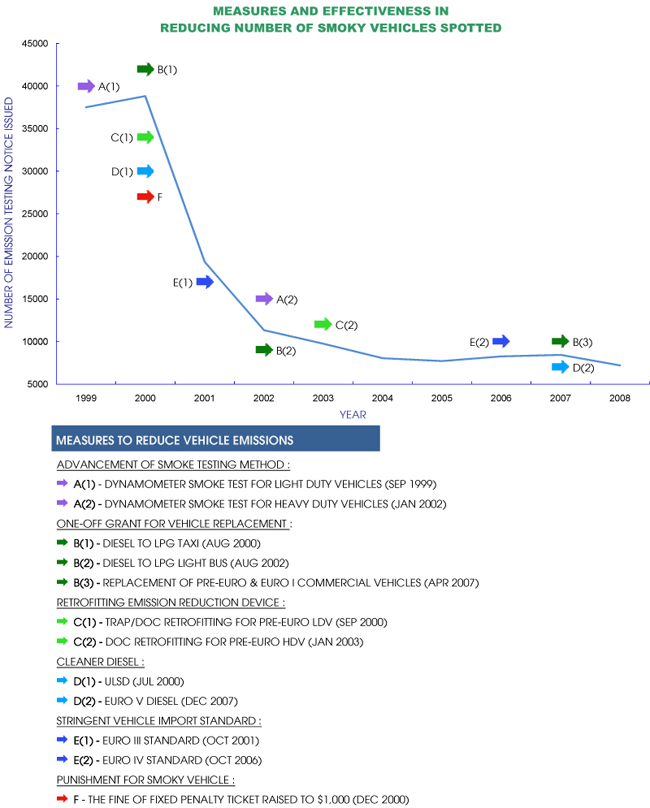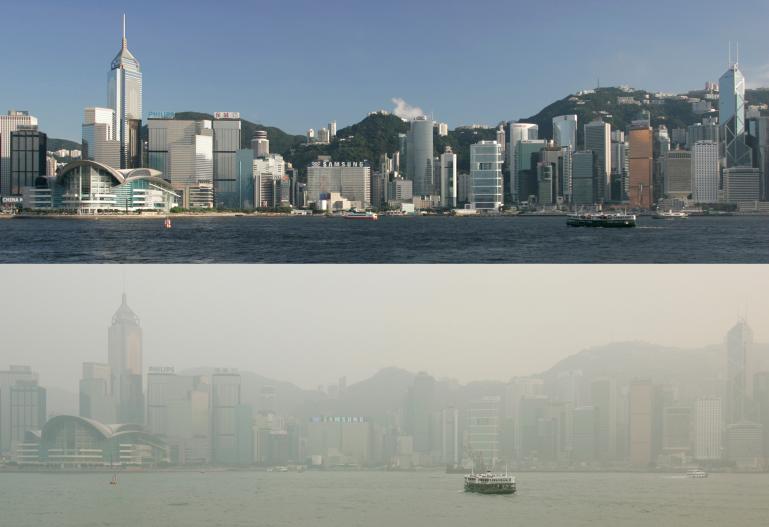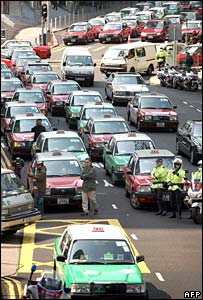Course:ECON371/UBCO2010WT1/GROUP6/Article1
' Hong Kong Pollution Hits ‘Record’ Levels Above 400'
Website - Hong Kong Pollution Hits ‘Record’ Levels Above 400
Summary
The article discusses record high pollution levels in Hong Kong, levels surpassing 400 on the API on March 22 2010. Many experts in various faculties contribute to the article, stating their own various reasons for why and how pollution came to reach these record highs, including the possibility of sandstorms in mainland China. The article discusses the difference in roadside pollution levels as opposed to general pollution levels. Though the latter is often significantly lower, the government of Hong Kong is still encouraging residents to reduce outdoor activities, and forcing Hong Kong schools to cancel outdoor sports classes and activities that induce physical exertion due to "dangerous" levels of air pollution.
Citation for Picture: http://www.epd.gov.hk/epd/english/environmentinhk/air/air_maincontent.html
Analysis
With limited space and a growing population in Hong Kong, the air quality does not impress a lot of environmentalist as well as others visiting Hong Kong. Two of the major factors that contribute to this unwanted air quality is the roadside pollution and sandstorm migrating from the Northern part of China such as Shanghai. Roadside pollution is a sum of many different factors such as traffic jams, peak hours and overpopulation and many more. Air pollution caused by the car emission had brought the pollution index to an alarming rate. With a unwanted contribution from the sandstorm from China, the government warns citizens to prevent from outdoor activities. This poor air quality has influenced areas in Hong Kong with better air qualities. This is a major concern for the locals and their government.
Citation for Picture: http://www.zamaanonline.com/images/ (Title: China-hong-kong-Air-Pollution)
Social Efficiency
“In terms of competitiveness I would say it must be a serious handicap.” Anthony Hedley, a professor in the School of Public Health at the University of Hong Kong, mentioned that on the website. In comparison to many cities that are the size of Hong Kong, Hong Kong has one of the most competitive edge that rivals to larger mega cities such as New York or Tokyo. With the geographical disadvantage, Hong Kong's population is limited to 1,024 square kilometer according to the Central Intelligence Agency of the United States of America. Although, there are well organized public transportation provided to the public, there are still too many vehicles that are on the roads of Hong Kong. Due to this problem, there is a much higher vehicle tax implied to the public to promote the idea of public transportation. Ironically, the public transportation in Hong Kong contributes to the traffic congestion which has an impact to the air quality in Hong Kong. No to mention, the air quality has a strong influence by the sandstorm that blows from Northern China. With a high and dangerous level of pollution index, it has create a problem to the locals since the government do not suggests outdoor activities and to stay indoors. This problem raises a huge issue in the health of local citizens of Hong Kong. There are many flaws in the transportation system in Hong Kong which directly influence the social efficiency of Hong Kong. Through an economical term, as the benefit cost of producing the emission is much higher, the quantity of emission will decrease. This situation would be the way if the private benefit cost and the social benefit cost are both equal. This type of relationship would lead the private individuals to maximize their gain from this trade. This relationship would lead to a much negative aspect to the environment. This example often relates to having a second car in Hong Kong or taking an alternative transportation which has less social benefit cost to the environment such as taxi.
Prof's Comments
Hong Kong, and many large Asian cities, has a pollution problem. Is this efficient? Be careful, as zero emissions is typically not efficient. How about the problem of pollution coming from outside? How does this bear on what is efficient?
I like the picture.


